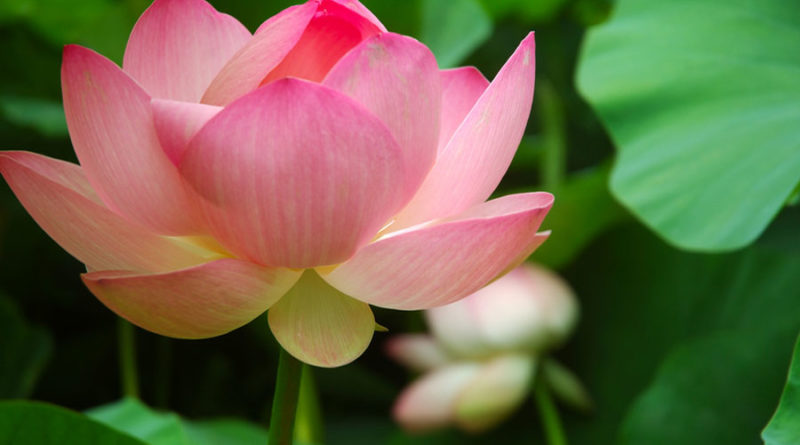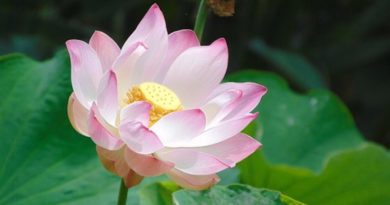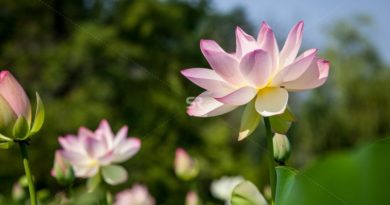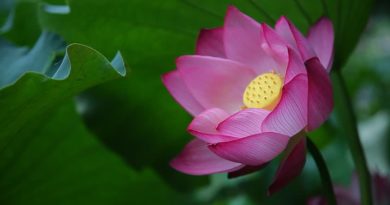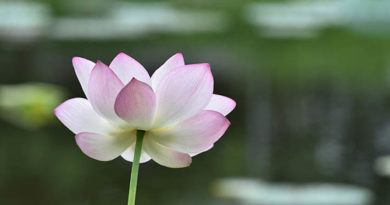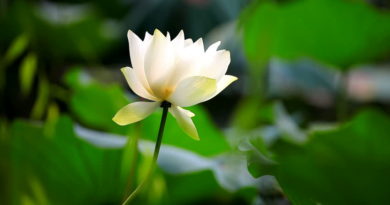The Essence Of Tipiṭaka – 6. Saṃyutta Nikāya: Saḷāyatana Vagga Saṃyutta Pāḷi
The Essence of Tipiṭaka – 6. SAṂYUTTA NIKĀYA: Saḷāyatana Vagga Saṃyutta Pāḷi
4 Saḷāyatana Vagga Saṃyutta Pāḷi
This division is made up of ten saṃyuttas or groups. It deals mainly with the six sense organs or bases of contact named internal sense bases (eye, ear, nose, tongue, body and mind); six corresponding sense objects, known as external sense bases (visible form, sound, odour, taste, tangible things and mind-objects); and consciousness that arises in relation to each pair of these internal and external sense bases. There are expositions on the impermanent nature of these sense bases and how relinquishing of attachment to them results in liberation. The second saṃyutta, known as the Vedanā Saṃyutta, focuses on the sensation arising from the coming together of the sense bases and conciousness. Sensation is shown to be of three kinds: pleasant, unpleasant and indifferent. None of these is permanent and each one of these is the cause of craving which in turn is the root of all suffering. Concise but illuminating expositions on nibbāna are found in many suttas. So also are there practical guides of Vipassana meditation.
In the very first two suttas, the Buddha explains that the six internal sense bases and six external sense bases have the nature of impermanence. Being impermanent, they are really suffering and not self. “Bhikkhus, realizing their true nature, you should not regard these twelve sense bases as ‘This is mine’, ‘This is I’, ‘This is my self’. Contemplate on them steadfastly, constantly, until Vipassana insight into their real nature arises.” The Buddha continues to explain that insight into the true nature of the twelve āyatanas will develop dispassion and disenchantment for them. Being disenchanted with them, there is no craving, clinging, thereby achieving the path and fruition.
In the famous Āditta Sutta, the fire sermon, delivered at Gayāsisa to one thousand ascetics formerly devoted to fire-worship but recently converted and admitted into the order as bhikkhus, the Buddha explains that each of the six sense bases and the six sense objects is burning with the fire of lust, with the fire of hate, with the fire of ignorance. Each is burning with the fire of birth, ageing and death; with the fire of sorrow, lamentation, pain, grief, and despair. Six forms of consciousness arising in relation to the six sense bases are also burning. The six contacts and the six sensations resulting from them are also burning.
The Buddha explains further that when a bhikkhu who has practised the Dhamma develops Vipassana insight and perceives that each of the bases is burning, he becomes disenchanted with it. Then craving fades away. With the fading of craving he is liberated. And when liberated there is knowledge that he is liberated. At the end of the discourse, one thousand former worshippers of fire attain arahatship.
In the Paṭhama Migajāla Sutta, the Buddha’s definition of a bhikkhu who lives in solitude is very edifying. When a bhikkhu unmindfully takes delight in the six sense objects, regards them wrongly as “This is mine”, “This is I”, “This is my self”, craving for them arises in him and he becomes attached to fetters. Such a bhikkhu in whom craving has arisen is regarded as one living with a companion, even if he lives alone deep in a forest away from towns and villages. When, however, he mindfully perceives the true nature of the six sense bases and objects, he does not wrongly hold on to them as “This is mine”, “This is I”, “This is my self” and craving for them does not arise in him. Such a bhikkhu in whom craving has not arisen is said to be living in solitude without any companion even if he lives in the midst of people, in towns or villages.
The Puṇṇa Sutta gives an account of a bhikkhu by the name Puṇṇa who asks for instruction from the Buddha on a suitable subject on which he can meditate in solitude. The Buddha advises him to contemplate on the true nature of the six sense bases and objects. When he perceives their true nature, no craving for them will arise in him. Eradication of craving will result in liberation and attainment of arahatship. After receiving the instruction, the bhikkhu informs the Buddha of his intention to reside in a very distant and remote land. The Buddha tells him that it is a wild country inhabited by savage tribes, and asks him how he intends to cope with the dangers and hazards that would face him. The answer given the bhikkhu provides a model lesson in fortitude and endurance.
The bhikkhu says, if he were menaced with invectives and curses or attacked physically, or if he had stones thrown at him or if he were hit with sticks or cut with swords, or pierced with spear, he would bear them with endurance with no malice against the savage tribes. Even if his head were to be chopped off he would feel he was luckier than those noble ones who had to commit suicide to be released from the suffering of the khandhas.
The Buddha remarks, “Well said, bhikkhu, well said. I believe you are qualified to lead a solitary life in that wild country. You will overcome all difficulties.”
As presaged by the Buddha, the bhikkhu is able to overcome all hostilities and difficulties in his new residence, and to convert five hundred men and five hundred women so that they come to take refuge in the Buddha, the Dhamma and the Sangha. And during the very first vassa residence, practising the meditation as instructed by the Buddha, the Bhikkhu Puṇṇa attains arahatship, fully accomplished in the three vijjās.
In the Bhāradvāja Sutta, an interesting interview between King Udena and the Venerable Piṇḍola Bhāradvāja is described. King Udena approaches the Venerable Piṇḍola Bhāradvāja while he is meditating at the foot of a tree in the king’s park. The king remarks that many young men have abandoned sensual pleasures and lead the holy life. They maintain the holy practice throughout their life. The king enquires, “What is the means by which they maintain the purity of their holy life?” The bhikkhu replies that they keep to the pure life by training themselves as instructed by the Buddha to regard a woman of their mother’s age as their mother, a woman of their sister’s age as their sister, and a girl of their daughter’s age as their daughter.
The king is not satisfied with the answer. He argues that even if a bhikkhu trains himself in the said manner, it is no guarantee for the non-arising of impure thoughts in him in connection with a female person. The Venerable Piṇḍola Bhāradvāja explains further they practise meditation on the foulness of a body by contemplating on the thirty-two constituent parts of the body. The king is still not convinced. He maintains that for older bhikkhus with more mature experience, who are well established in mindfulness and concentration, contemplation on the thirty-two constituent parts of the body might prove to be salutary; but this type of meditation for younger bhikkhus might have an adverse effect exciting lust and passion instead of aversion for the human body. Only when the Venerable Piṇḍola Bhāradvāja tells him the bhikkhus practise restraint of the six faculties keeping a close watch on the doors of the six senses that the king agrees that purity of the holy life is possible under such circumstances.
In the Paṭhama Dārukkhandhopama Sutta, the discourse given by the Buddha on the bank of the River Ganges at Kosambī, the Buddha uses the simile of a log floating down the river. He says that if the log does not get stranded on either of the two banks, nor sinks in the middle of the river, nor gets salvaged and deposited on the bank by some one, nor is retrieved by men or devas, nor sucked in by a whirlpool, and if it does not get decomposed on the way, it will be carried by the current until its destination, the ocean, is reached.
In this simile, the near bank means the six internal sense bases, the far bank represents the six external sense objects, sinking in the mid-river means getting immersed in sensuous desires; being salvaged and deposited on a bank means being hindered by one’s own conceit; being retrieved by men means doing some services or running errands for men; being retrieved by devas means practising the holy life with the deva realm as one’s objective; being sucked into a whirlpool means wallowing in sensual pleasures; getting decomposed on the way means becoming corrupt, immoral, heedless of the disciplinary rules. If a bhikkhu manages to steer himself clear of all these obstacles, he will be carried along by the current of Right View until he reaches his destination, nibbāna.
In the Chappāṇakopama Sutta, the Buddha teaches that a bhikkhu practising the holy life must exercise control of his sense faculties. The six sense faculties may be likened to six animals, namely, a snake, a crocodile, a giant bird, a dog, a jackal and a monkey. Suppose each animal is bound by a rope and the ropes are tied together into a single knot. When they are left in this state, each animal will try to get to its own habitat-the snake to its underground hole, the crocodile to the river, etc. In this way they will pull and struggle against one another until they become exhausted and are dragged along by the strongest of them. The mind of a bhikkhu with unrestrained sense faculties will be impelled by the senses towards corresponding sense objects.
But suppose each animal is bound by a separate rope which is fastened to a pole firmly planted in the ground. Each animal will make furious attempts to return to its home and becoming exhausted will finally stand, sit, curl or lie down quietly near the post. Similarly by practising contemplation of the body (kāyagatāsati), the sense faculties are placed well under control. Mindfulness of the body serves as the firm post to which each of the faculties is tied down.
In the section focusing on sensation (Vedanā Saṃyutta) the Buddha describes the three types of sensation, pleasant, unpleasant and neutral. In the Samādhi Sutta he states that a disciple of the Buddha who is concentrated (samāhito), aware (sato) and maintaining thorough understanding of impermanence (sampajāno) knows with wisdom the sensations, their arising, their cessation and the path leading to their end. Having reached the end of sensations such a meditator is said to be free from craving, fully liberated.
In the Pahāna Sutta he makes clear that pleasant sensation gives the meditator the opportunity to eliminate the underlying condition of craving (rāgānusayo pahātabbo). In the same way, unpleasant sensation and neutral sensation allow the eradication of the deep conditioning of aversion (paṭighānusayo pahātabbo) and ignorance (avijjānusayo pahātabbo) respectively. One who eradicates these underlying conditionings is called one who is totally free of underlying conditioning, who has seen the truth, who has cut off all craving and aversion, who has broken all bondages, who has fully realized the illusory nature of the ego, who has made an end of suffering.
The sutta emphasizes that those who relish pleasant sensations, who reel in unpleasant ones or take pleasure even in the tranquil neutral sensations are not liberated from their misery. The condition for achieving full liberation is defined as: striving ardently, not missing the thorough understanding of impermanence even for a moment (ātāpī, sampajaññaṃ na riñcati). A meditator who achieves this state is said to be a wise person who knows the totality of the sensations.
In several suttas in this section the Buddha makes it clear that vedanā (the sensation he is refering to here) is bodily sensation. In the Paṭhama Ākāsa Sutta he compares the various winds that arise in the sky to the different kinds of sensations that arise in the body.
In the Paṭhama Gelañña Sutta, given at Vesāli on the occasion of a visit to the sick room, he exhorts the bhikkhus to remain constantly aware of impermanence and to let the time come. This, he says, is his dispensation. He goes on to explain that one must understand that when a pleasant, unpleasant or neutral sensation has arisen it is based on something: it is based on this very body. Thus the meditator dwells observing the impermanent nature of the sensations in the body.
This section on vedanā is full of practical advice and inspiration for serious meditators.
In a later saṃyutta, Dukkarapañhā Sutta states that in the teaching of the Buddha, it is difficult first to become a member of the order as a novice and as a bhikkhu. Secondly, it is difficult to be happy and comfortable in the order with its disciplinary rules. Thirdly, even if one stays the course and remains in the order, it is difficult for one to practise concentration meditation and Vipassana meditation to attain higher stages of knowledge. Then fully endowed with supporting pāramīs (perfections), a bhikkhu who gets instruction in the morning and starts practising meditation in the morning may be fully liberated by the evening; if he gets instruction in the evening and starts practising meditation in the evening he may be fully liberated by the morning.
A wealthy householder by the name of Citta figures quite prominently in some of the suttas of this division. In Nigaṇṭha Nāṭaputta Sutta, Nigaṇṭha Nāṭaputta finds himself unable to accept the view expressed by the Buddha that there is jhāna and samādhi free from vitakka and vicāra. He discusses this problem with Citta, the wealthy householder, who is an ariya disciple of the Buddha. Citta tells him: “I believe there is jhāna and samādhi free from vitakka and vicāra, not because of my faith in the Buddha but because of my own achievement and realization.” Citta explains that he has personally experienced jhāna samādhi unaccompanied by vitakka and vicāra and has no need to rely on others for believing this.
The same Citta used to have in his younger days a close friend who later became the naked ascetic Kassapa. Each has gone his own separate way and the two friends meet again only after thirty years. Citta asks his friend whether by living the ascetic life he has gained anything more than what could be achieved by the wholesome Dhamma of ordinary people. The ascetic Kassapa admits that he has nothing to show besides his nakedness, his shaven head and the accumulation of dust on his body.
When asked in return what he himself has gained by being a disciple of the Buddha and following the path as instructed by his teacher, Citta informs him that he has become fully accomplished in the four jhānas, and having removed the five fetters, is now an anāgāmi (a non-returner). The naked ascetic, impressed by his achievements, tells Citta that he wants to be a disciple of the Buddha. Citta introduces him to the leading bhikkhus and helps him to get admission into the order. With the guidance of the theras and encouragement of his friend Citta, the ex-ascetic Kassapa puts in such an effort in the practice of meditation that in no time he gains the supreme goal of arahatship.
In the Saṅkhadhama Sutta, the Buddha points out the wrong views held by Nigaṇṭha Nāṭaputta on kamma and its resultant effects. According to the village headman Asibandhakaputta, his teacher Nigaṇṭha Nāṭaputta teaches that every one who commits evil deeds of killing, lying, etc., is definitely bound to be reborn in states of woe. Whatever action is performed in a greater frequency, that action tends to determine the destiny of a being. The Buddha points out the fallacy in the two statements, one contradicting the other. An individual does not often commit the evil deed, for instance, of killing. Other actions besides killing are performed by him in a more frequent manner; hence, according to Nigaṇṭha Nāṭaputta, he will not be destined to states of woe for his evil act of killing.
Then the Buddha explains that only very heinous acts such as killing of one’s own parents, creating a schism in the Sangha, etc., bring the dire resultant effect of certain destiny in the states of woe. Other misdeeds, physical, vocal or mental, cannot be regarded as leading with certainty to unhappy destinations. Instead of just feeling remorseful and penitent over one’s particular evil deed, one should recognize it to be evil, and resolve not to repeat a similar unwholesome action, and follow it with the practice of concentration and Vipassana meditation.
Thus abandoning all evil deeds and doing only wholesome deeds together with the development of brahmavihāra bhāvanā until accomplished in jhāna, one can escape from the unhappy consequences of one’s evil actions and look forward to a better future. This Saṅkhadhama Sutta establishes the fact that as in matter of practice so also in the matters of views, the Buddha takes the middle path.
In the Bhadraka Sutta, the Buddha explains the origin of suffering by giving illuminating examples. The village headman Bhadraka wants to know the cause of suffering that afflicts mankind. In reply, the Buddha asks him to think of his son and imagine that his son is meeting with unexpected misfortunes, or getting arrested by the king’s order or facing a severe punishment. Bhadraka imagines as he is told and finds that such thoughts give rise to sorrow, lamentation, pain, distress, grief and despair in him. When he imagines a stranger to be placed in a similar situation, facing similar predicament, he finds that he is not troubled at all with any mental agony. He explains to the Buddha that the difference in his mental reaction to the two situations lies in the fact that he loves his son with a parent’s love and is very fond of his son, whereas he has no such feeling towards the stranger.
Next the Buddha asks him if any love, passion or desire arises in him before he meets or sees or hears about the woman who has become his wife. Bhadraka replies that only when he meets, sees and hears about her that does he develop passion and attachment towards his wife. When the Buddha asks him further whether he will suffer from sorrow, lamentation, pain, distress, grief, despair, if anything untoward happens to his wife, he confesses that he will suffer more than these agonies; he might even lose his life through intense suffering.
The Buddha points out then that the root cause of suffering in the world is craving, greed, passion and desire that engulf mankind. It has been so in the past, as it is now , and so it will be in the future.
———
Copyright Vipassana Research Institute – Source: https://www.tipitaka.org/eot#4
TẢI MOBILE APP PHẬT GIÁO THERAVĀDA ĐỂ XEM THÊM NHIỀU THÔNG TIN HỮU ÍCH (ANDROID & IOS)

